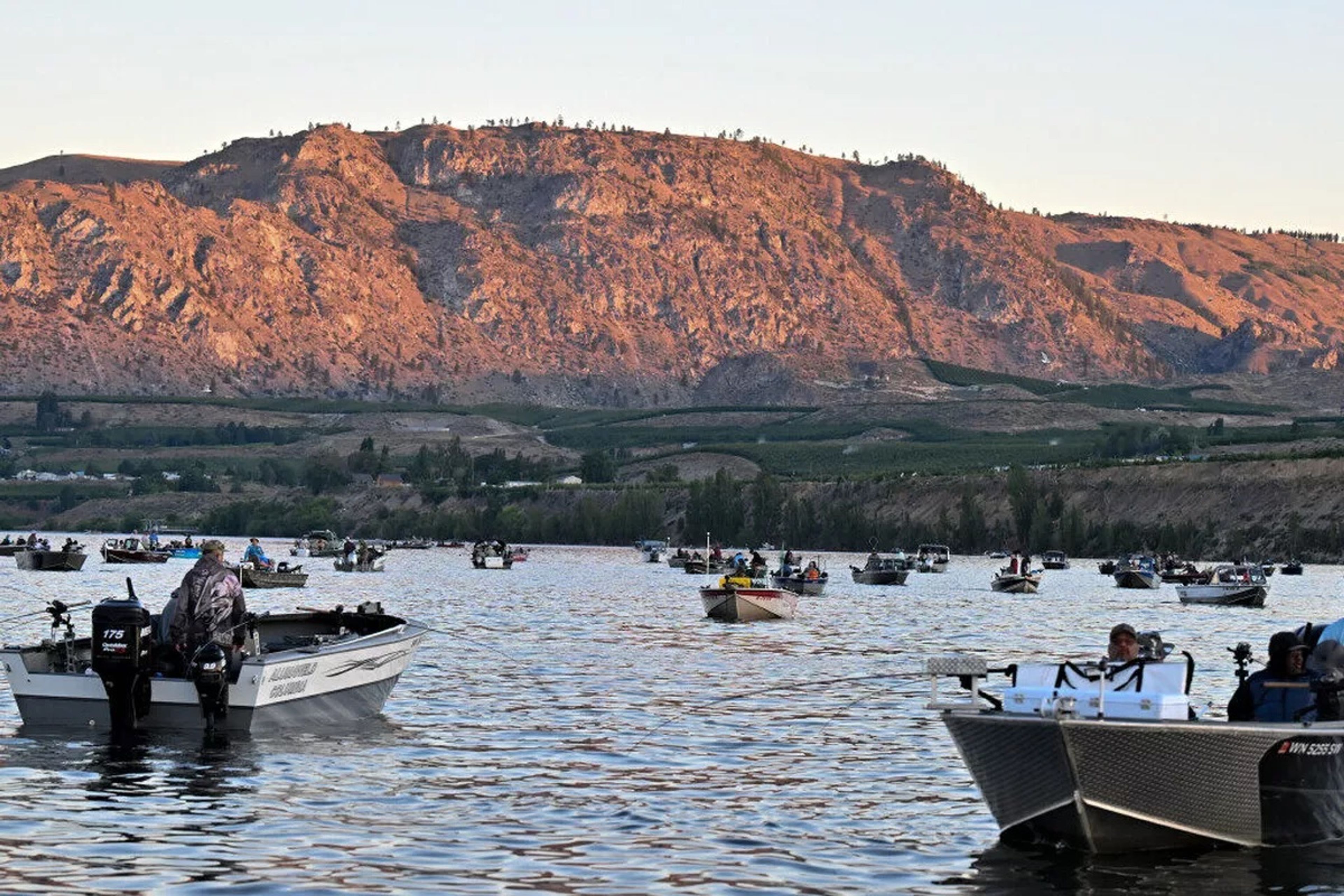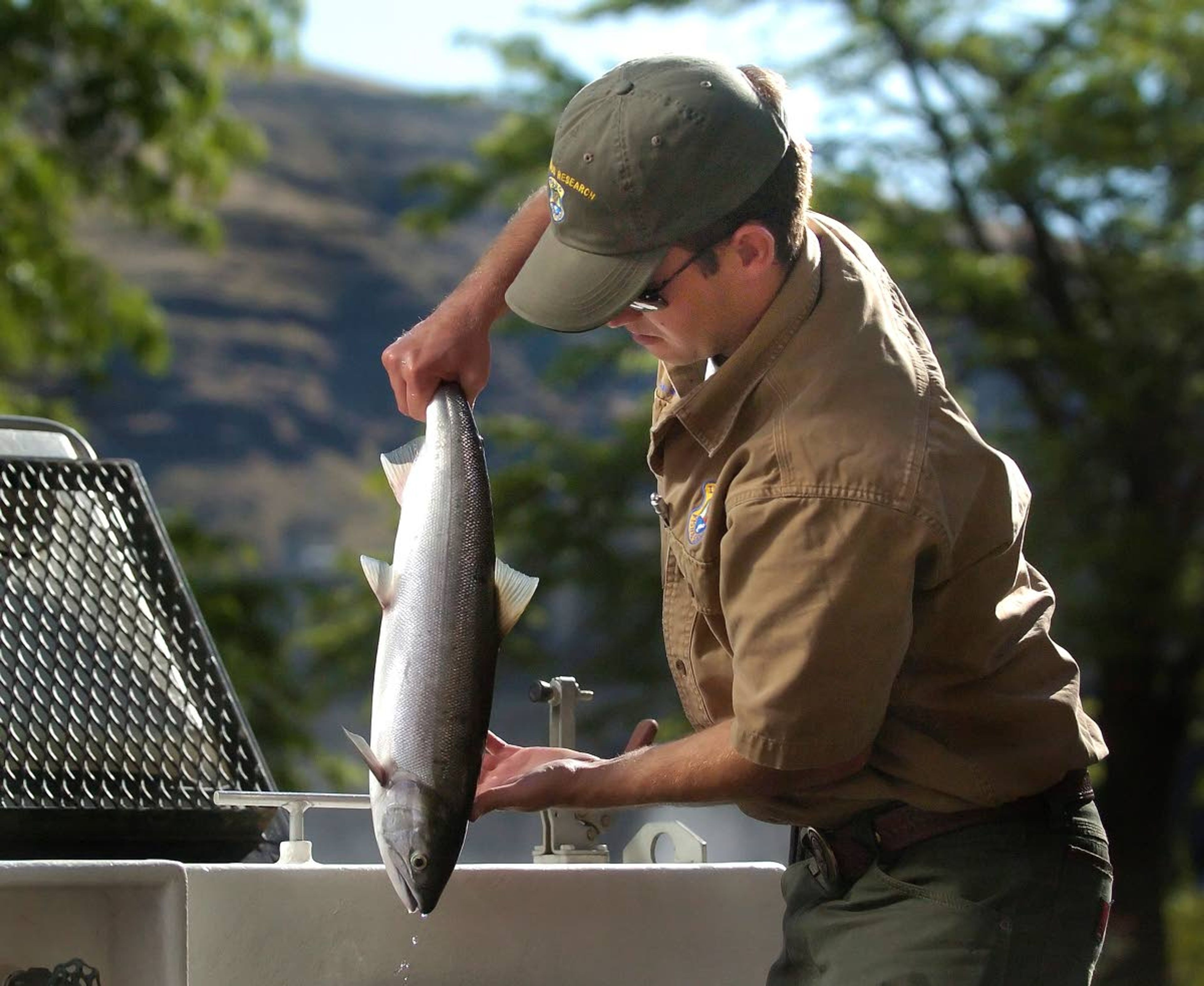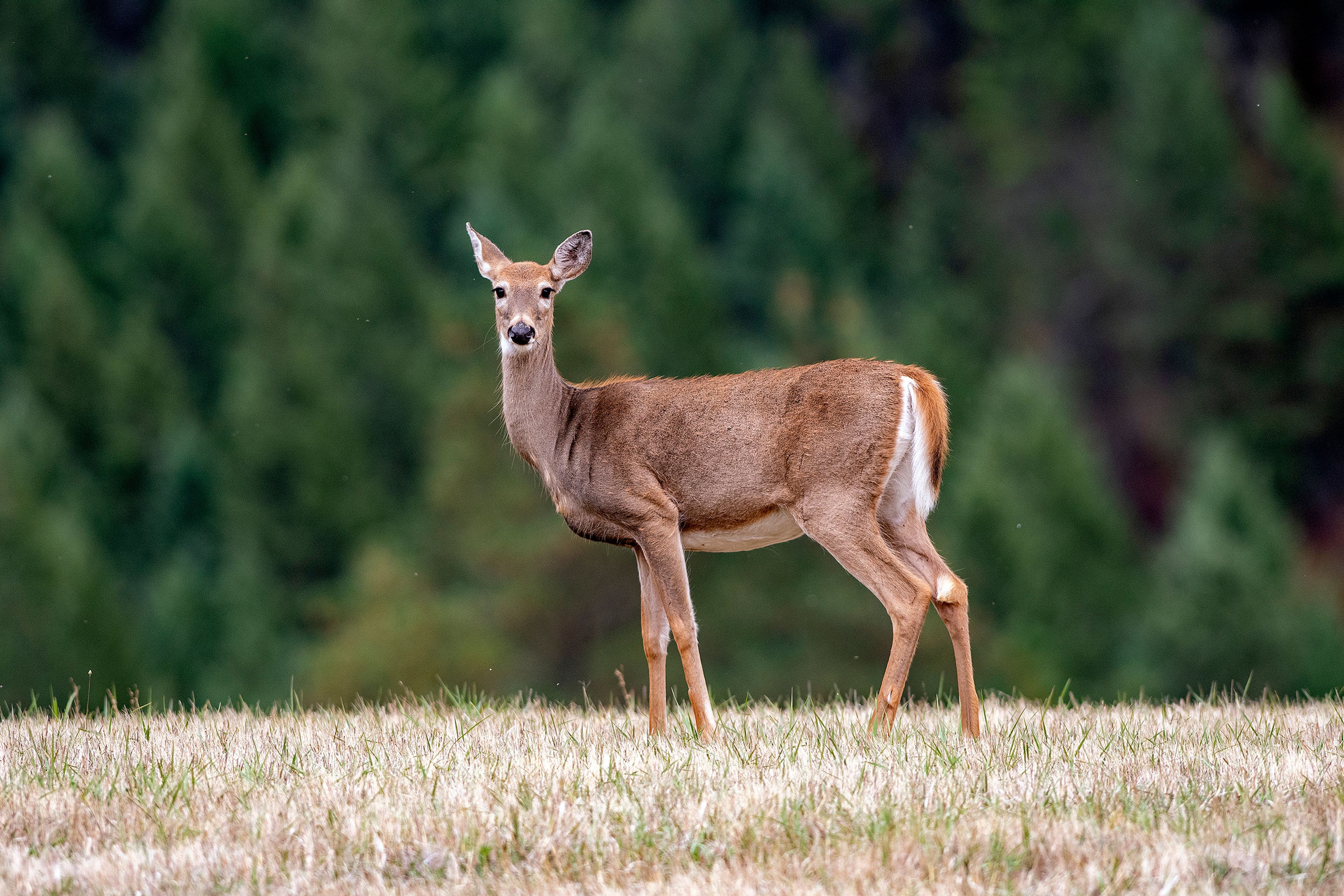A tail of two sockeye runs
Columbia River likely to set new record; Snake River run is struggling
Sockeye salmon bound for the middle and upper Columbia River are on pace to set a modern-day record but the endangered Snake River run is falling short of expectations and under threat from the heat wave gripping the region.
Last week, state, tribal and federal fisheries managers raised their forecast for sockeye returning to the Columbia River from about 400,000 to more than 700,000. As of Wednesday, 565,729 sockeye had been counted passing Bonneville Dam. All but a tiny fraction of those fish are bound for the upper Columbia River, where they support a popular sport fishery in the Brewster Pool above Wells Dam.
Fisheries managers called for the Snake River run, the most endangered salmon run in Idaho, to number more than 3,700 in their preseason forecast. When the Columbia Run comes in above forecast, the Snake River often follows suit. But that doesn’t appear to be happening this year.
“So far the PIT tag numbers over Bonneville haven’t materialized quite the way we hoped,” said David Venditte, a research fisheries biologist for the Idaho Department of Fish and Game at Boise. “We are looking at about 900 to 1,000 over Bonneville (so far) and we are somewhere near halfway through the run.”
PIT tags are tiny chips that are implanted in a small percentage of salmon when they are juveniles. The chips can be detected at dams and other places and allow biologists to track returns.
The Idaho Department of Fish and Game announced last week that it would begin trapping sockeye at Lower Granite Dam on the Snake River starting Tuesday and holding them in hatcheries for spawning. Intercepting the fish halfway through their return journey from the Pacific Ocean to the Stanley Basin is considered an extreme but necessary measure when scorching temperatures cause the lower Snake and Salmon rivers to spike well into the 70s.
“We are concerned about conditions in the Snake and Salmon and the heat wave going all the way downstream,” Venditti said. “Pretty much we are concerned about conditions from Bonneville up.”
Thus far, he said survival of Sockeye between Bonneville Dam on the Columbia River and Lower Granite Dam on the Snake River has been above average. As of Wednesday, 58 sockeye had been counted at Lower Granite Dam.
On the Columbia River, more than 30,000 sockeye had been counted as far upstream as Wells Dam through the end of June.
Water temperatures in the mid-70s can devastate sockeye runs. In 2015, high water temperatures, made worse by low flows, caused most of the sockeye in the Snake and Columbia rivers to perish.
Where to catch them
Fishing for sockeye isn’t allowed in Idaho where the fish are listed as endangered under the Endangered Species Act. Washington recently closed sockeye fishing downstream of the Tri-Cities to help protect fish bound for Idaho but has an open season starting in the Hanford Reach.
“If people want to catch them, just head to Brewster in the next month,” said Chris Donley, fish program manager for the Washington Department of Fish and Wildlife at Spokane.
The Brewster Pool at Brewster, Wash., supports a robust sockeye fishery when fish numbers are high. The pool is typically crowded with boats targeting the fish bound for the Okanogan River that empties into the Columbia at Brewster.
“The reason there are so many sockeye there is the Okanogan gets hot and the lion’s share of the sockeye heading up Columbia want to go up the Okanogan River and spawn so when the river heats up they get stuck right there.”
Donley said it’s predominantly a boat fishery at Brewster and it is often crowded.
“If you are patient, it’s a lot of fun,” he said. “If not, it will drive you crazy.”
More than 100,000 sockeye are expected to return to Lake Wenatchee on the Wenatchee River. A sockeye season will likely be held there in late July or early August.
Barker may be contacted at ebarker@lmtribune.com or at (208) 848-2273. Follow him on Twitter @ezebarker.











